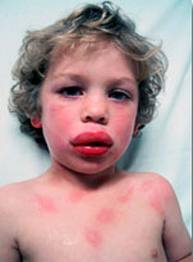Education of the person with allergies is of great importance. Effective treatment does not only involve taking an antihistamine against allergies, which can be bought over-the counter. To get optimal control of allergy symptoms, evaluation with the help of an allergist is necessary, and skin tests will give more information. A regimen of allergy shots is an effective way to control allergies. It is also up to the allergic person to avoid substances that can be the cause of the problem. Allergy season triggers a lot of questions in patients who have had allergic reactions in the past. The most feared ones are anaphylactic reactions or anaphylactic shock from exposure to peanuts or ragweed. People with a history of allergies all have the risk of more severe reactions that need rapid intervention as anaphylactic shock can be deadly. People can be sensitized to various foods (peanuts, nuts, fish, shell fish, soy, wheat). Food additives often associated with allergic reactions can be sulfites (present in dried fruit and wine), food coloring (tartrazine) and flavor enhancers like monosodium glutamate. Beside those allergies, reactions to animal fur and dander, feathers, pollen of trees, grasses and weeds (ragweed being one of the worst) can be a challenge to allergy sufferers. People can get sensitized in any age group. Even adults who showed no allergic reactions in the past can come down with allergies later in life.
Patients with food-related allergies should be aware that an injection with adrenaline (epinephrine) could make a difference between life and death in severe allergic reactions. Carrying an EpiPen (an injectable dose of epinephrine) is one important way of having an “emergency break”. But carrying the device at all times is not enough. The user has to be fully knowledgeable as to how to use it and when to use it. Getting a prescription from the physician and proper explanation from physician as well as the pharmacist is the next important step.
Food allergies have received more attention over the past years. Food labels will show, whether a product may contain traces of nuts or peanuts, and many schools have banned the use peanuts among their students (see the result of an inadvertent exposure to peanuts in a child who is allergic to it in the image above). It may sound like a radical approach, but given the fact that peanuts have shown disastrous reactions in allergic individuals, it is not a surprise. A new Ontario law, which was passed in 2005, is geared to make schools safer for children with allergies. After 13-year-old Sabrina Shannon from Pembroke, Ontario died at school in 2003 following food-allergy related anaphylaxis, the law requires every school board to establish and maintain an anaphylaxis policy. School staff must be trained in dealing with life-threatening allergies and emergency procedures must be in place.
Studies by researchers at the Mount Sinai Medical Center in New York showed that levels of Ara h 1, the major peanut allergen has staying power. Volunteers who ate a peanut butter sandwich had the allergen in their saliva for several hours after the meal. Clearance took up to 4.5 hours. The researchers went on to assess several interventions: vigorous tooth brushing for two minutes, tooth brushing and rinsing the mouth twice with water, rinsing the mouth without tooth brushing, and chewing gum for 30 minutes. All those intervention reduced the amount of peanut allergen, but none uniformly removed it!
For persons with food allergies it is a warning signal: even a kiss from a person who recently ate the food (peanuts in this case) can cause dangerous allergic reactions. The presence of allergens in the saliva may or may not be applicable to other foods besides peanuts. More studies are needed, said Dr. Jennifer Maloney and her colleagues.
More information about treatment of asthma caused by peanut allergy: http://nethealthbook.com/lung-disease/asthma-introduction/asthma-treatment/
Reference: The Medical Post, April 4,2006, page 19-21
Last edited Oct. 31, 2014






